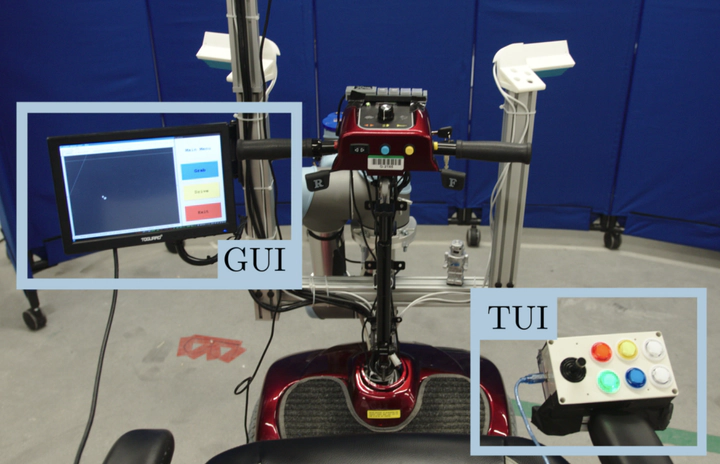
Abstract
The design of user interfaces (UIs) for assistive robot systems can be improved through the use of a set of design guidelines presented in this article. As an example, the article presents two different UI designs for an assistive manipulation robot system. We explore the design considerations from these two contrasting UIs. The first is referred to as the graphical user interface (GUI), which the user operates entirely through a touchscreen as a representation of the state of the art. The second is a type of novel UI referred to as the tangible user interface (TUI). The TUI makes use of devices in the real world, such as laser pointers and a projector–camera system that enables augmented reality. Each of these interfaces is designed to allow the system to be operated by an untrained user in an open environment such as a grocery store. Our goal is for these guidelines to aid researchers in the design of human–robot interaction for assistive robot systems, particularly when designing multiple interaction methods for direct comparison.